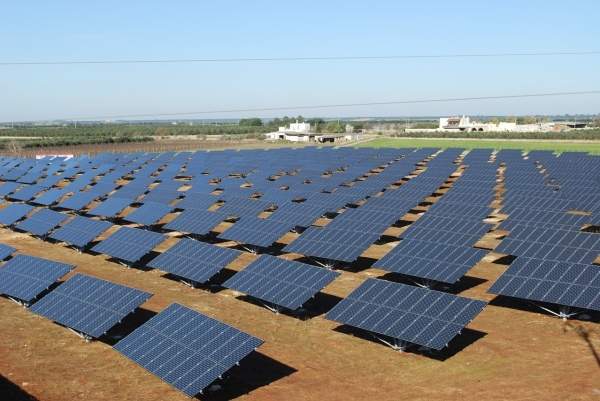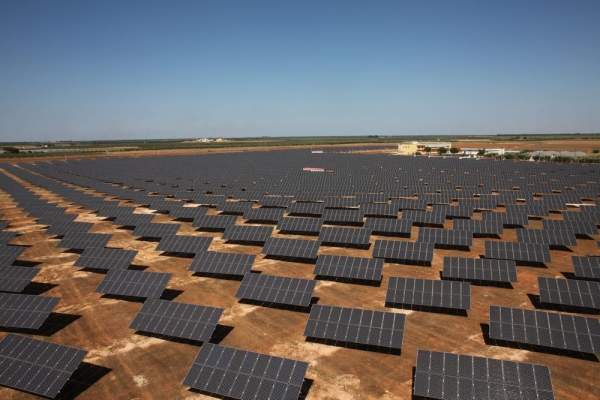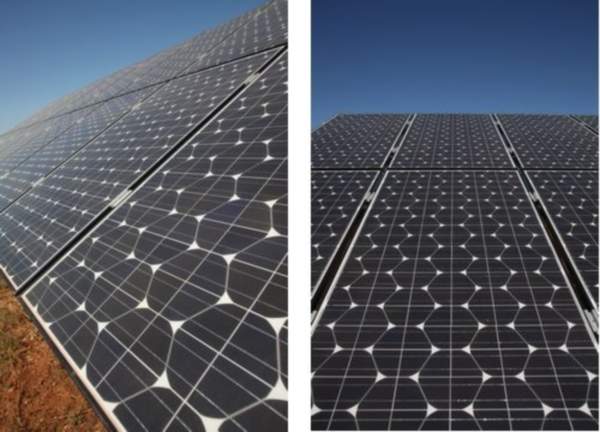The 7.56MW solar power plant in Torre Santa Susanna, in the Brindisi province of the Apulia (Puglia) region, Italy, is one of the largest solar tracking projects in Europe.
The photovoltaic modules are fixed with solar trackers which are oriented towards the sun to increase the total output power.
The solar park was approved in August 2009. Construction was started in February 2010. Installation of the solar modules and equipment was completed by December 2010. It was built with an investment of €40m. The PV park was connected to the Italian utility ENEL’s electricity grid in April 2011 and was officially opened in June.
It was reported in 2011 that an undisclosed investor has acquired the photovoltaic park and would operate it for 20 years.
Torre Santa Susanna solar PV park and plant details
The uniaxial Torre Santa Susanna solar tracking plant is built on an area of 19ha of open land. It produces about 13,300,000kWh of electricity a year, which is sufficient to power 3,300 houses with four household members.
Panasonic Solar supplied 32,202 HIT-235HDE4 modules. Each module produces 235W and has a conversion efficiency of 16.9%.
The solar park is equipped with Power One Aurora PVI Central inverters and 1,900 Ideematec SafeTrack ST 25 tracking systems of 4.23kW each.
Technology used as part of the major solar tracking project
The facility is equipped with HIT (Heterojunction with Intrinsic Thin layer) solar cells from Panasonic Solar (previously Sanyo Solar). The HIT module cell comprises a mono thin crystalline silicon wafer enveloped, with ultra-thin amorphous silicon layers.
Impurity-free i-type amorphous silicon layers are formed in the solar cells between the p-type and n-type amorphous silicon layers and the crystalline base, improving boundary characteristics. The inverters convert the direct current, generated in the solar cells, into alternating current to allow feeding to the electricity grid.
Advantages of the Panasonic Solar HIT photovoltaic panels over the traditional crystalline silicon solar panels include increased electricity generation capacity in a limited area, reduction in power losses and high efficiency at high temperatures.
Torre Santa Susanna project is the first large-scale installation of Sanyo Electric’s HIT solar systems. They were selected due to their proven performance, power efficiency, reliability and long-term investment benefits.
The modules were earlier operational only in medium-sized commercial and residential rooftops. They are now being installed on major projects elsewhere, such as the Blackfriars Station Solar Bridge in London.
Contractors involved with Italy’s Puglia-based 7.56MW solar power plant
The project was planned, designed and constructed by general contractor EST Energie & Solar Technik on a turnkey basis.
EST Maintenance uses its proprietary software for monitoring and maintaining the facility. Dean Solar was responsible for commercial management of the project.
Construction and integration of the solar systems was done by CIET. The tracking systems were supplied and installed by Ideematec. Arcadis acted as the engineering services consultant. Unicredit Leasing was the financier of the project.
Deutsche Bank’s Asset Finance and Leasing (AFL) renewable energy division was responsible for project management, consultation services and arrangement of long-term debt financing and equity for the solar tracking plant.
The bank has so far developed about 50 large scale renewable energy projects, including offshore and onshore wind projects generating more than 850MW across the globe.
PV power market prospects and growth in Europe
Italy is the second largest photovoltaic market (after Germany) in Europe. The solar power market has been rising rapidly in Italy since 2007 and is projected to touch 30GW in 2020.
The boom is due to government incentives and grants to combat climate change and shift to renewable resources for power generation. The other giants of the solar power market are Spain, the US, China, Japan and France.







